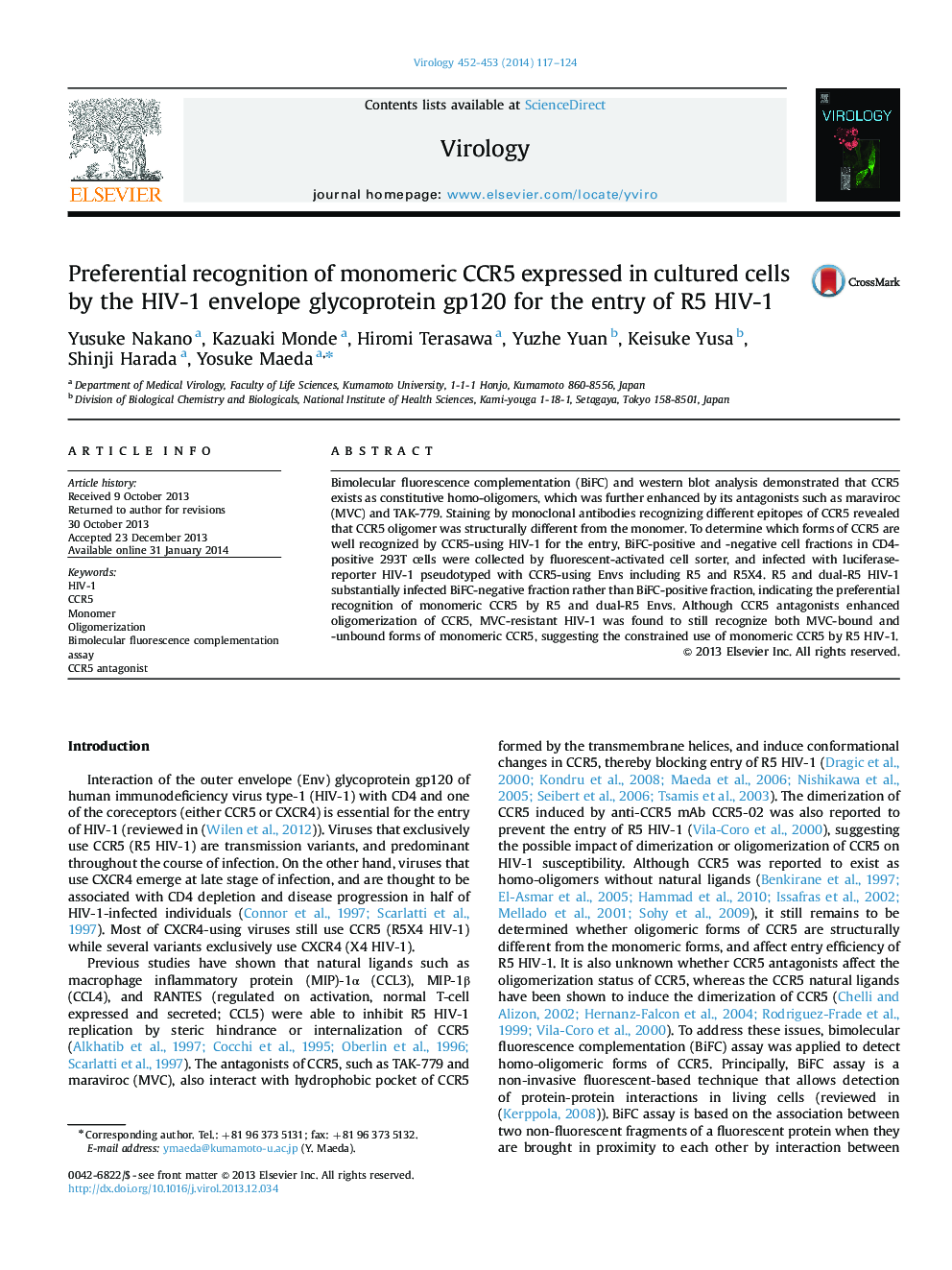| Article ID | Journal | Published Year | Pages | File Type |
|---|---|---|---|---|
| 6140244 | Virology | 2014 | 8 Pages |
â¢We showed that CCR5 exists as constitutive homo-oligomers in cultured cells.â¢CCR5 antagonists further enhanced CCR5 oligomerization.â¢The oligomeric forms of CCR5 were structurally different from the monomers.â¢R5 and dual-R5 HIV-1 preferentially recognized monomeric CCR5.â¢Maraviroc-resistant HIV-1 also preferentially recognized monomeric CCR5.
Bimolecular fluorescence complementation (BiFC) and western blot analysis demonstrated that CCR5 exists as constitutive homo-oligomers, which was further enhanced by its antagonists such as maraviroc (MVC) and TAK-779. Staining by monoclonal antibodies recognizing different epitopes of CCR5 revealed that CCR5 oligomer was structurally different from the monomer. To determine which forms of CCR5 are well recognized by CCR5-using HIV-1 for the entry, BiFC-positive and -negative cell fractions in CD4-positive 293T cells were collected by fluorescent-activated cell sorter, and infected with luciferase-reporter HIV-1 pseudotyped with CCR5-using Envs including R5 and R5X4. R5 and dual-R5 HIV-1 substantially infected BiFC-negative fraction rather than BiFC-positive fraction, indicating the preferential recognition of monomeric CCR5 by R5 and dual-R5 Envs. Although CCR5 antagonists enhanced oligomerization of CCR5, MVC-resistant HIV-1 was found to still recognize both MVC-bound and -unbound forms of monomeric CCR5, suggesting the constrained use of monomeric CCR5 by R5 HIV-1.
